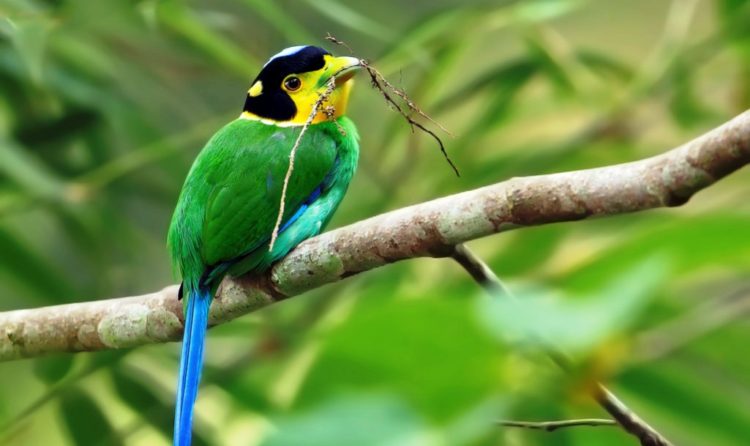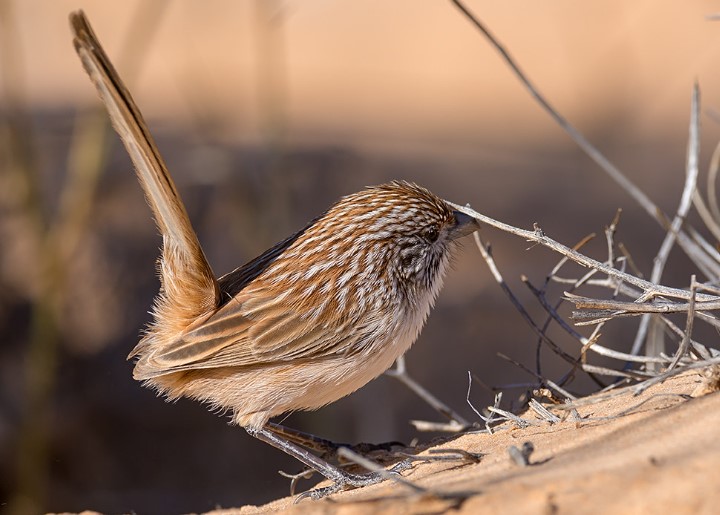The eye-catching long-tailed broadbill (Psarisomus dalhousiae) is a species of broadbill that is normally found in the Himalayas. It is extending east through Northeastern India to Southeast Asia. The broadbill is the only bird in the genus Psarisomus. It is a songbird in the Eurylaimidae family that has a broad beak and a broad head. The species is typically found in broad-leaved evergreen forests between 150 and 2500 meters above sea level. The size is about 10 inches in length and weighs between 50 and 60 grams. This colorful bird can be identified by its shrill call. There are several countries where they are found: India, Nepal, Bhutan, Thailand, Myanmar, Laos, Cambodia, Vietnam, China, Malaysia, and Indonesia. They prefer moist lowland forests, streams, and creeks, as well as tropical and subtropical moist mountains.
Read More: The Black-headed nightingale-thrush
This broadbill is a forest bird that lives on insects. It is surely the most widespread bird among the top ten most wanted birds in Thailand. Broadbills belong to a polytypic group. The species appears to prefer watery habitats such as wetlands, streams, and freshwater. Non-migratory species but are residents. As the weather gets colder in the Himalayas, long-tailed broadbills move down to lower altitudes.
This bird is very sociable and usually travels in large groups, making noisy parties except during the mating season. It builds a pear-shaped nest in a tree. However, the female habitually lays between 5 and 6 eggs. Which are incubated by both sexes; and both sexes also help to feed the young. Most birders with Long-tailed Broadbills on their target list won’t be disappointed. Many Long-tailed Broadbills have been observed around their nests, which suggests that they may breed cooperatively. “Pseeu..pseeu..pseeu” and “tseeay..tseeay” are the calls of long-tailed broadbills. The sound they make is also raspy and sharp, like “pseeup”.
Their diet consists of insects and they are commonly found foraging in forests. During non-breeding seasons, they forage in small groups of up to 15 individuals. These insects eat grasshoppers, crickets, locusts, beetles, aphids, dipteran flies, bugs, and moths. Fruits, berries, and small frogs are occasionally eaten. There are many national parks where they are protected throughout their range and the long-tailed broadbill is listed as having the least concern on the ICUN Red list.
Also, Read Black Sickle Bill! The Bird of Paradise








